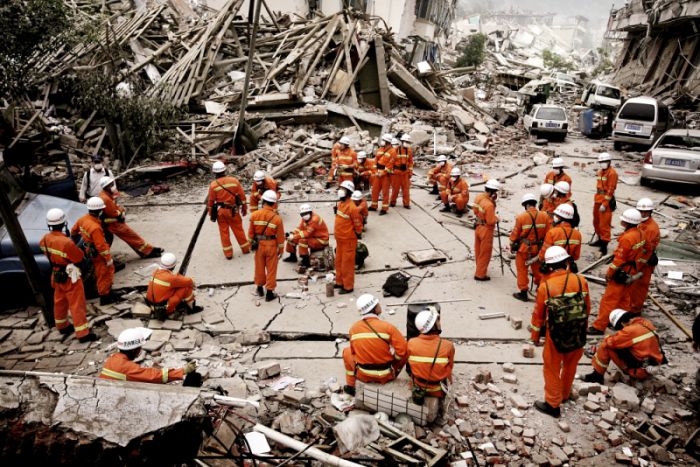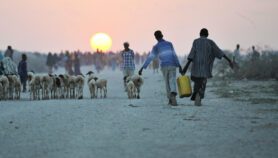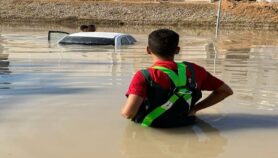Send to a friend
The details you provide on this page will not be used to send unsolicited email, and will not be sold to a 3rd party. See privacy policy.
[GENEVA] At least 65 science bodies say they want to join a UN effort to lower global disaster risk.
The organisations are set to form a Scientific and Technical Partnership that will provide evidence to help roll out the Sendai Framework for Disaster Risk Reduction. This global deal, signed in March last year, aims to curb deaths and other losses from disasters, whether natural or not.
“We have good science. Why isn’t it translated?”
Colin McQuistan, Practical Action
Scientists share a “profound responsibility” in this process, said Robert Glasser, chief of UNISDR (the UN Office for Disaster Risk Reduction), at a science conference on the framework last week (27-29 January) in Switzerland. This requires not only responding to disasters but also “getting out in front of them”, he said.
Other organisations can signal their interest in joining the science partnership until the end of this month, says a UNISDR spokesperson. The list of would-be partners has not been made public while their proposals for assistance are examined, a process that will run through to March.
For example, the partners may pledge to carry out specific research programmes or to bring in new partners, the spokesperson says.
In his closing speech at the conference, Glasser did highlight ongoing efforts from several organisations. For example, UN and space agencies have shown at the conference how space technology can help understand and map disaster risk, and 15 research centres, part of the International Consortium on Landslides, set up a ten-year initiative to better understand and reduce this specific risk.
But one recurring theme during the conference sessions was how to ensure scientific evidence finds its way to the people who must act on it.
“We have good science. Why isn’t it translated?” said Colin McQuistan, climate change and disaster risk reduction advisor at UK development technology charity Practical Action, adding that governments are responsible for using scientific evidence.
“The biggest challenge is that communities understand local risks, but take those risks anyway because they have no economic opportunity not to,” McQuistan said. He called for more social science research to help understand how people make this kind of decision.
But another participant even questioned the value of doing more research on disaster risk reduction, arguing that it was more important to take stock of existing science before launching new initiatives.In the closing session, Virginia Murray, vice-chair of the UNISDR Science and Technology (S&T) Advisory Group, insisted that research should address the root causes of disasters rather than their symptoms.
In parallel to the partnership, the UNISDR is putting together an S&T road map that details what the partnership will do and how it will measure progress.
The latest draft of the road map, issued in November, mentions, for example, improving national databases recording disaster losses and tracking research investment focused on disaster risk reduction.
The conference discussions — from ethics to standards, through to science publishing and research funding — will feed into the road map’s final revisions this month.














